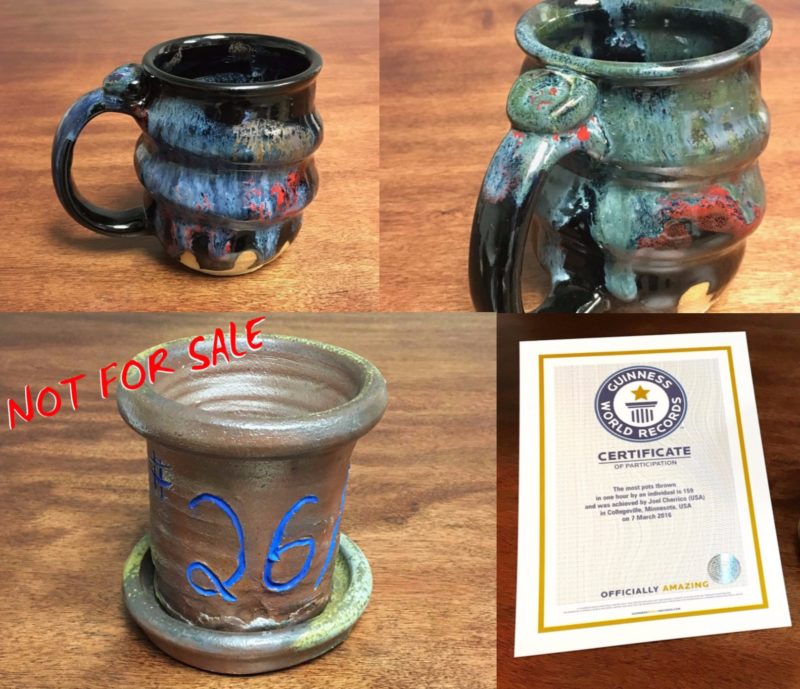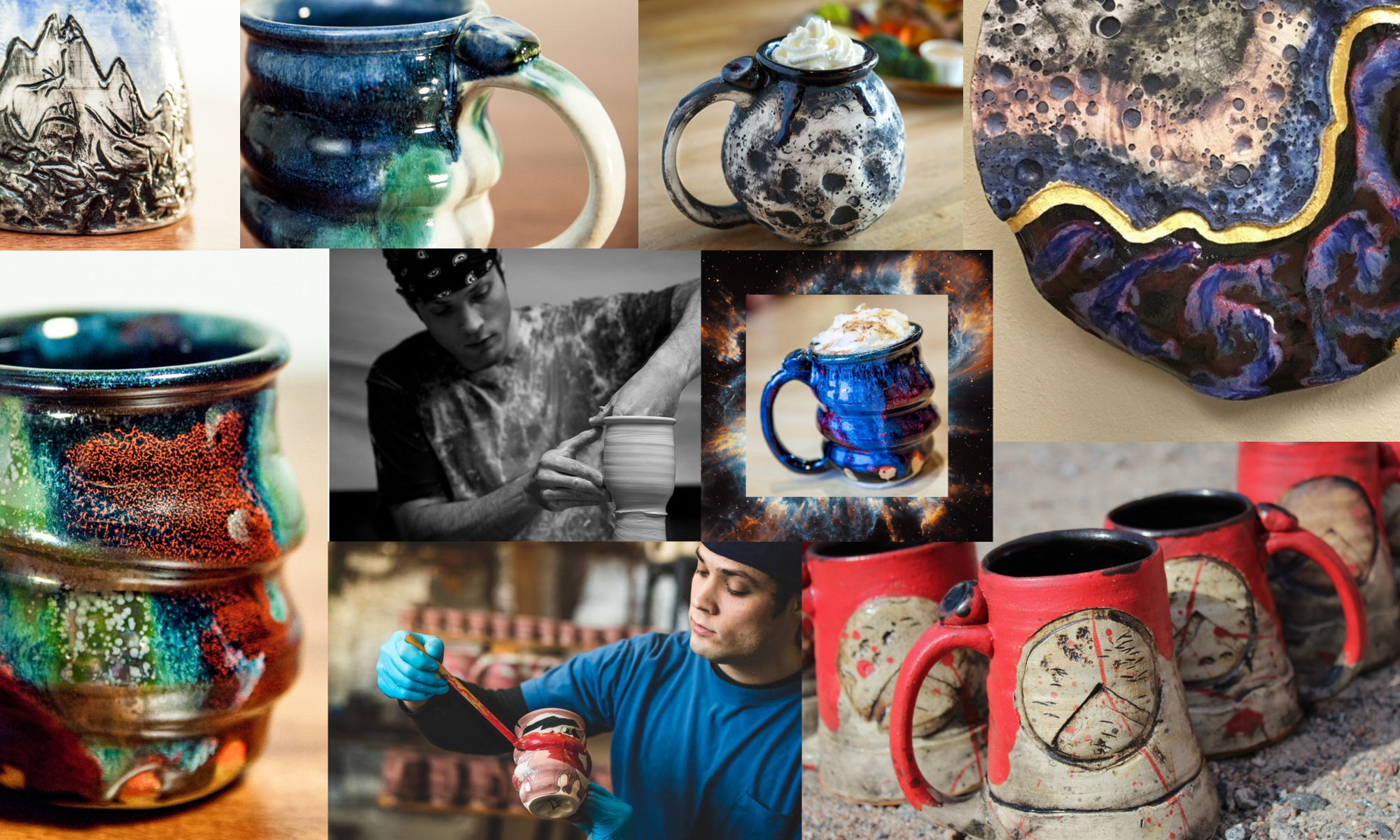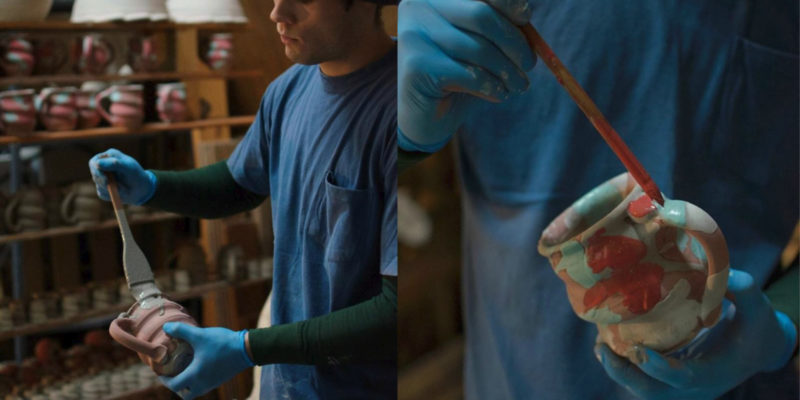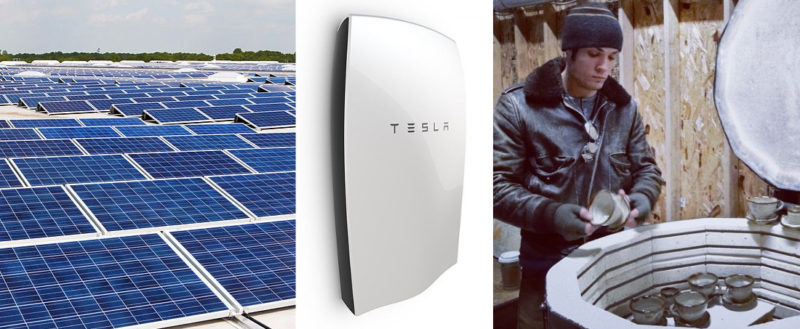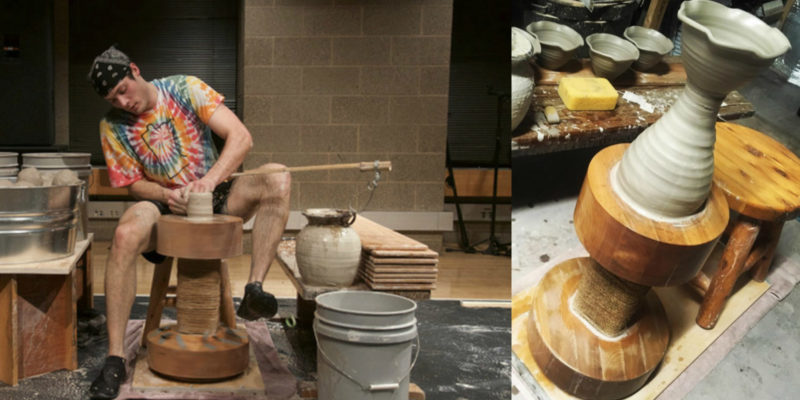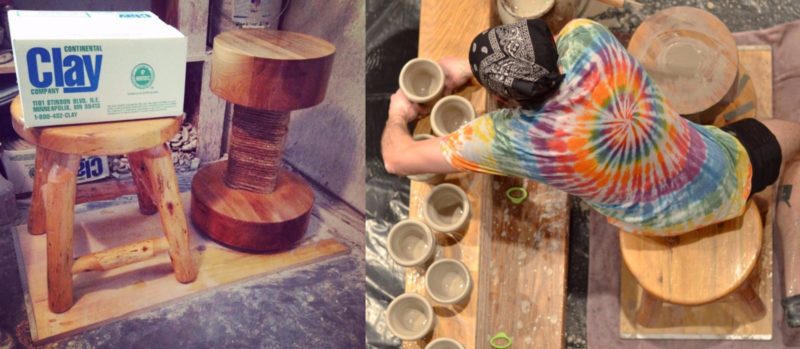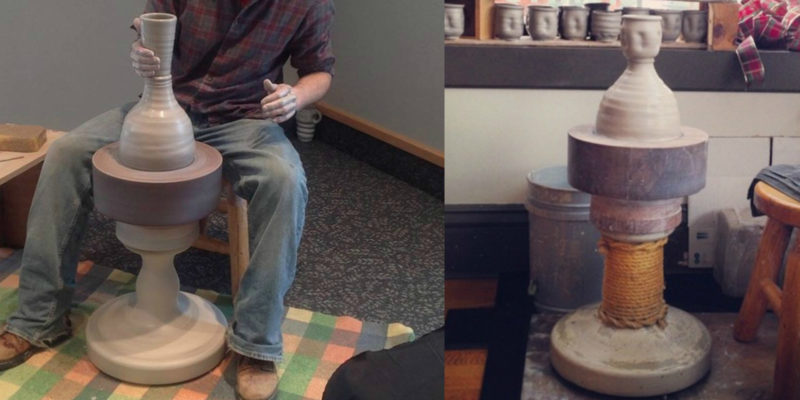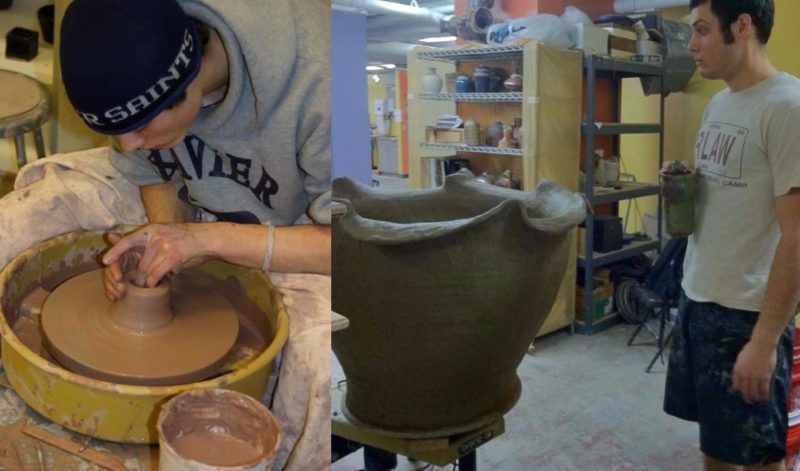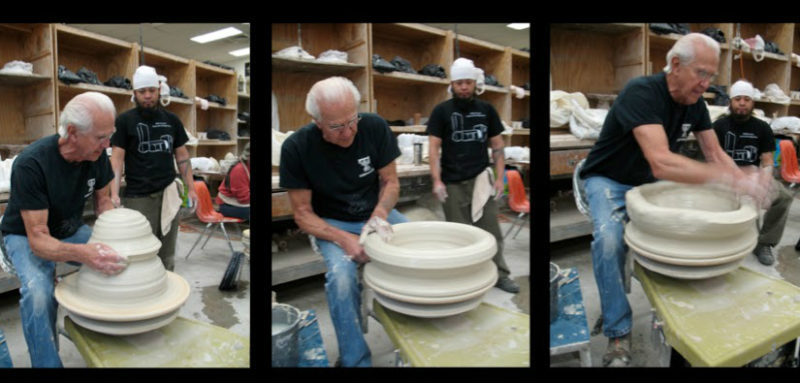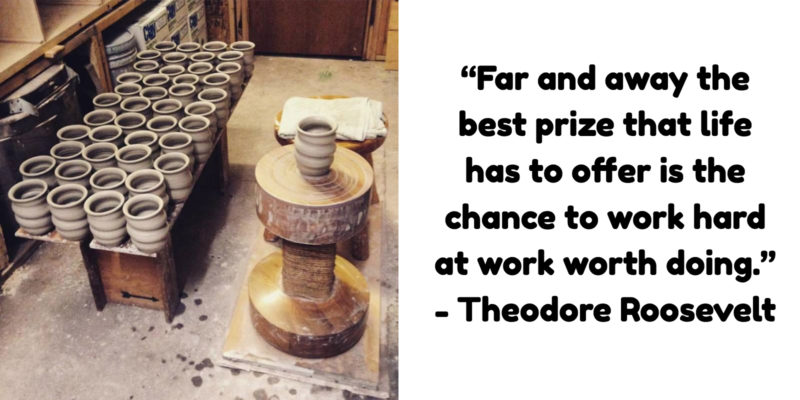*This is a guest blog post, edited by Joel Cherrico and written by Macy Kelly: CSB/SJU Marketing Intern at Cherrico Pottery. In this post, Macy addresses the ways we practice being eco-friendly at Cherrico Pottery.
I’ve never met anyone who loves getting a box filled with packing peanuts. We know, they make a mess. At Cherrico Pottery, it’s important that we deliver your pottery as safely and as eco-friendly as possible. That’s why our peanuts are 100% biodegradable. Sustainability is a fun challenge that we take on in multiple parts of the Cherrico Pottery process.
Packing and Shipping
-
Up to 40% recycled content in bubble wrap to initially wrap the pottery.
-
“Lightweight” boxes instead of double walled boxes cut our cardboard use almost in half.
-
Packing and shipping with local egg cartons saves materials and money, even though we only use them occasionally.
- 100% biodegradable peanuts to secure and protect the pots in boxes. They not only decompose in water leaving no toxic waste, but they are FDA compliant and made with “static-free organic starch.”
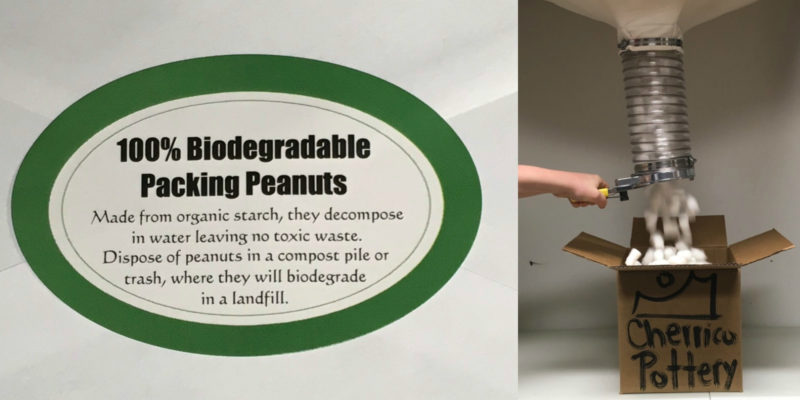
During Kickstarter, we used over 1,000 egg cartons to ship 1,000 pots. Egg cartons can always be requested via email during the checkout process in place of the biodegradable packing peanuts. When a shipment from Cherrico Pottery arrives, you will see the logo hand-painted on each box. This is because there is no point in branding with paper stickers or stamps on the boxes when we strive to be as unique and real as possible, while keeping the artistic vibe alive.

In The Studio
Joel sacrificed natural gas kiln firings and Copper Red Glazes, even though he used to get gorgeous results. You can view and learn about them in these three blog posts:
https://www.cherricopottery.com/2012/11/25/gas-firing-stoneware-pottery-at-cone-10-natural-variations-in-the-copper-red-glaze/
https://www.cherricopottery.com/2012/09/03/how-to-glaze-ceramics-like-a-painter-but-let-the-kiln-do-the-dripping/
https://www.cherricopottery.com/2012/04/24/copper-red-glazes-the-elusive-bright-red-pottery/
His business model is devoted to long-term environmentalism. Gas kilns are easier to load and can produce beautiful pottery in bigger batches, but natural gas is a non-renewable resource. It doesn’t give opportunities to utilize free solar energy raining down from the sky. Electricity does. The electric kiln is not more environmentally friendly currently, but solar energy has the power to change that.
Kiln placement is another simple, smart choice that saves energy. Joel’s kiln is located in the middle of the studio, so it doubles as a radiant heater all winter. He also dries pottery using the heat of the kiln, saving energy and money every time he fires by being able to turn off other heaters.
Saving energy can be simple and beautiful, even with an act as simple as bringing pots outside to dry in the sun instead of using fans.
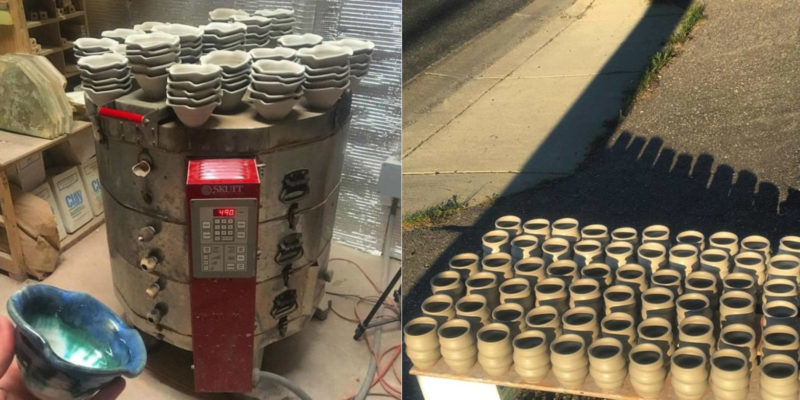
After taking a three day workshop from Steven Hill Pottery, Joel learned how to successfully apply up to 8 glaze layers on one pot. In this video, you can learn some of Steven Hill’s process too.
Cosmic Mugs have 4-5 layers of glaze each, but Joel chose not to purchase steel spray guns that Steven uses to get his magnificent colors. Spray guns require energy to fill a compressed air tank, as well as a spray booth to catch the airborne glaze chemicals. Instead, Joel created innovative ways to get similar effects simply using brushes.
It’s the same reason Joel uses kick wheels to make pottery rather than electric, motorized wheels.
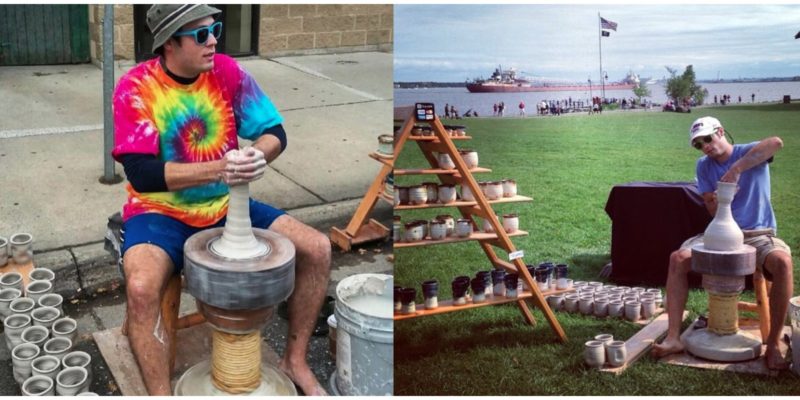
Why Donations Relate to Environmentalism
Businesses aren’t required to use environmentally friendly materials or donate anything, ever. Cherrico Pottery has shipped worldwide to 16 countries, so we think it is only right to explore how we can help make the earth a better place. All of these donations are impacting the world in positive ways:
- Moon Mug auction with a 20% donation to the B612 Foundation: b612foundation.org
- GWR Pot #1 with a 20% donation to St. Jude’s Children’s Hospital
- GWR pot #159 with 20% donation to three different charities shown in the product description.
- Monthly membership and occasional larger donations to The Planetary Society: planetary.org
- Monthly membership and occasional larger donations to The American Craft Council: craftcouncil.org
What’s Next?
Our goal is to break ground on a new pottery studio that supports future pottery production with 100% solar fired pottery. This is a ridiculously ambitious goal, but not out of reach. If Tesla can debut an entire product launch on stored sunlight, then it must be possible to power a kiln.
If you want to help us accomplish this goal, please consider buying a pot.
🎁🎉 April Pottery Giveaway 🎁🎉
What’s one thing you do to encourage environmental sustainability? Leave a comment below before this Friday telling us one thing you do to try and be more environmentally friendly in your daily life, your job, hobbies, travel, anything! Joel will pick the best 3 comments and give them one of three pots ($459 value) totally free: World Record planter #26/159 ($159 value + $20 packing & shipping), one Cosmic Mug inspired by a Planetary Nebula ($125 + $15 packing & shipping) and one Cosmic Mug inspired by a Molecular Cloud Cluster ($125 + $15 packing & shipping).
To enter, you must leave one, genuine comment, or the moderator will not approve your comment or include you in the giveaway. Please use your PERSONAL name or initials and not your business name, as the latter comes off like spam. Please allow 24-48 hours for your comment to appear. You must also be on our email newsletter distribution list to qualify, so please make sure you are signed up. Joel will pick one winner Friday around 6pm Central and you will receive the pottery shipped to you nearly anywhere globally, totally free.
*UPDATE 4/28: ENDED. Congrats Holly, Liz and Kelsey and thanks so much to everyone who participated! Did you know that the word, “solar” was mentioned on this post/comments about 27 times and the words “recycle” and “recycling” and “recyclable” were mentioned about 275 times WOW! I hope you had as much fun reading these comments as I did. – Joel
